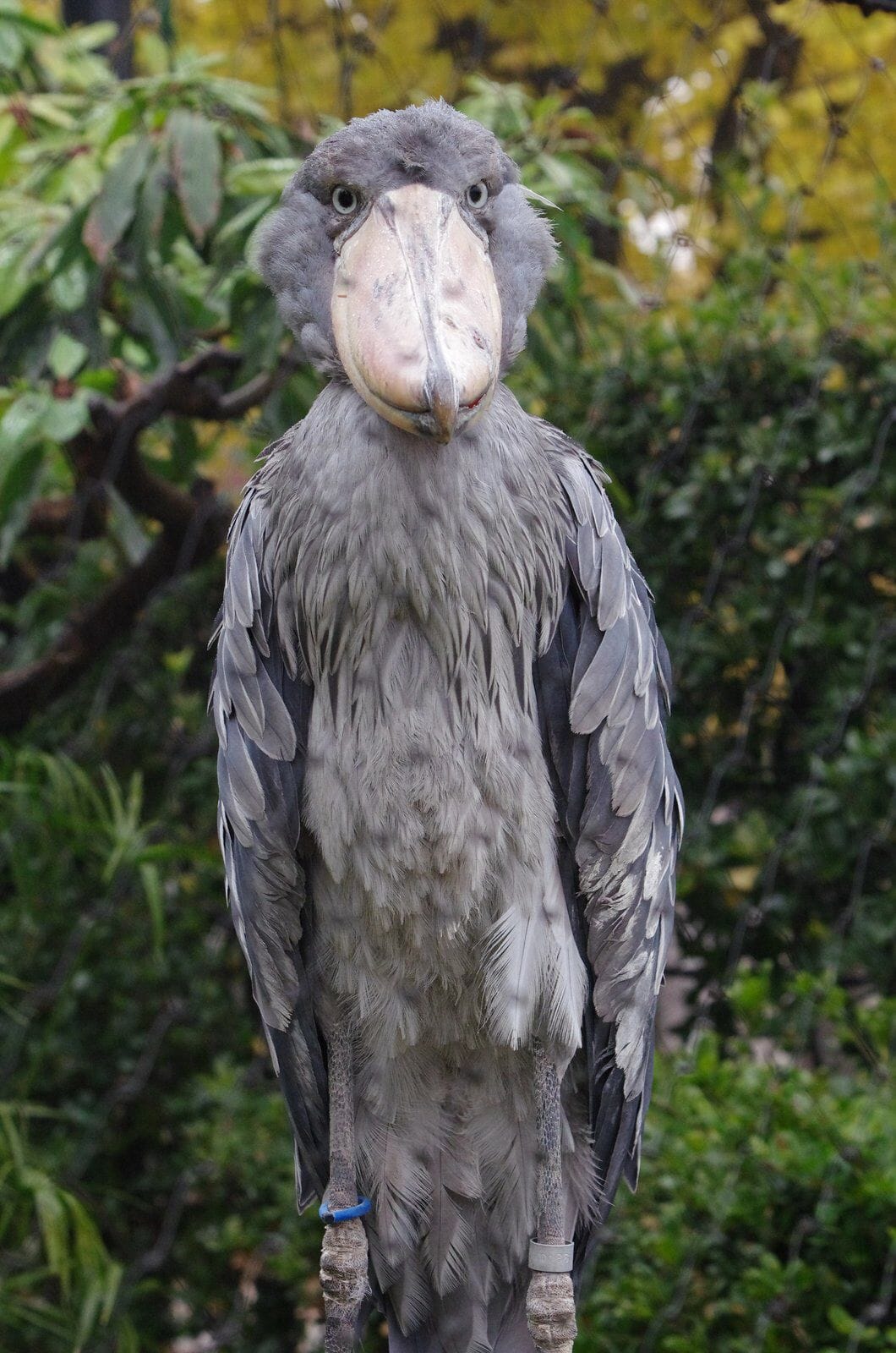The shoebill stork, a bird seemingly plucked from prehistory, shatters expectations with its bizarre vocalizations, most notably a bill-clattering reminiscent of a machine gun. This elusive creature, often dubbed the “prehistoric pelican,” inhabits the swamps and wetlands of Eastern Central Africa. But beyond its imposing size and distinctive shoe-shaped bill lies a world of fascinating sounds that are only beginning to be understood.
A Symphony of Bill-Clattering
Imagine the rapid-fire clatter of castanets echoing through a dense swamp. That’s the sound of a shoebill stork communicating. This bill-clattering, produced by snapping the upper and lower mandibles together, isn’t just a random noise; it’s a complex form of non-vocal communication.
Scientists believe that shoebills use bill-clattering for a variety of purposes:
- Greetings: Pairs of shoebills often greet each other with synchronized bill-clattering, possibly as a way of recognizing each other or strengthening their bond.
- Courtship: The male shoebill’s clattering may play a role in attracting a mate, much like a bird song.
- Chick-Rearing: After feeding their chicks, shoebill parents often engage in gentle bill-clattering, which is thought to have a calming or appeasing effect.
- Territorial Defense: A rapid burst of bill-clattering may serve as a warning signal to rivals, telling them to keep their distance.
Beyond the Clatter: Whispers and Croaks
While bill-clattering is their most famous sound, shoebills have other vocalizations too, each with its own potential meaning:
- Hisses: When a shoebill feels threatened or wants to protect its young, it may let out a low hiss— a clear warning to back off.
- Croaks: Shoebills also produce deep, guttural croaking sounds. While the exact purpose of these croaks is still being studied, scientists believe they could be linked to communication or territorial defense.
- Whining: Like many baby birds, shoebill chicks use a high-pitched whining sound to beg for food from their parents.
Unlocking the Secrets of Shoebill Sounds
By studying shoebill sounds, researchers are gaining valuable insights into the lives of these fascinating and elusive creatures. Analyzing their vocalizations helps us understand:
- Social Lives: How shoebills interact with each other, find mates, establish territories, and raise their young.
- Ecological Role: How shoebills fit into their wetland habitats and the impact they have on the ecosystem.
- Environmental Impacts: How factors like habitat loss and noise pollution might be affecting their ability to communicate and survive.
The Shoebill’s Uncertain Future
Sadly, shoebill storks are listed as Vulnerable by the International Union for Conservation of Nature (IUCN). Habitat loss, due to draining of wetlands for agriculture and development, poses a significant threat. They also face pressure from hunting and the illegal wildlife trade.
The good news is that conservation efforts are underway to protect shoebills and the wetlands they depend on. By raising awareness about these incredible birds and the importance of their unique sounds, we can help ensure that the prehistoric calls of the shoebill stork continue to echo through the swamps of Africa for generations to come.
Can You See a Shoebill Stork in the UK?
While you won’t find them in the wild in the UK, there’s one amazing shoebill stork you can visit at Exmoor Zoo. He’s quite a sight to see, with his prehistoric looks and distinctive bill-clattering calls. Exmoor Zoo provides a great opportunity to learn more about these fascinating creatures and support their conservation.
Other Fascinating Creatures
The animal kingdom is full of fascinating creatures with their own unique sounds and behaviors. If you’re interested in learning more about the diversity of life on Earth, be sure to check out articles about the silvery marmoset and the Siberian chipmunk.
- Unveiling Bernhard Caesar Einstein’s Scientific Achievements: A Legacy in Engineering - July 15, 2025
- Uncover who is Jerry McSorley: CEO, Family Man, Business Success Story - July 15, 2025
- Discover Bernhard Caesar Einstein’s Scientific Contributions: Unveiling a Legacy Beyond Einstein - July 15, 2025















